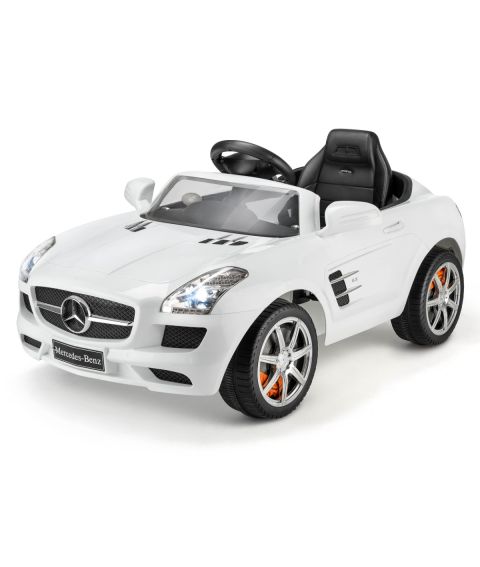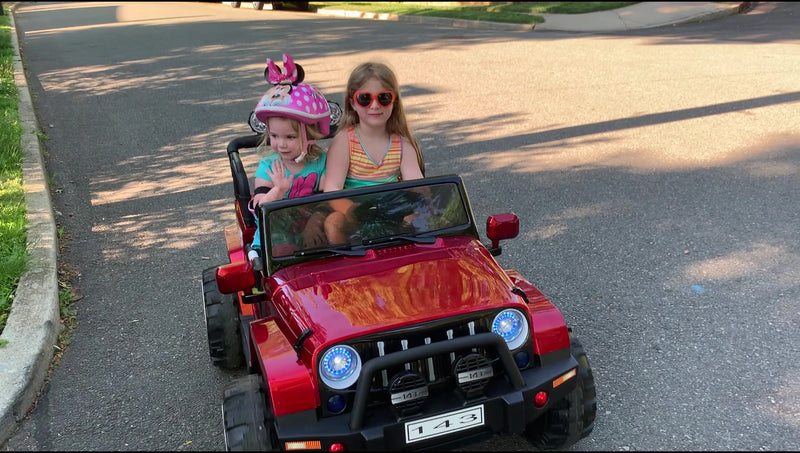Excellent News To Picking Ride On Toys
Wiki Article
What Do I Need To Know About Battery Life And Charging Times Of An Electric Ride On Children's Car?
Knowing the battery life and the life span of a car that is electric is essential to ensure that your child has an enjoyable and safe journey. What you should know the battery type
The majority of electric vehicles designed for kids utilize rechargeable batteries, usually lead-acid or lithium-ion batteries. Lithium ion batteries have a longer battery life than lead acid and are charged faster.
Capacity of Battery
The operating duration of the ride-on vehicle is dependent on the battery's capacity. It is measured in amp hours or watt-hours. Large capacity batteries permit longer playtime, without needing recharge.
Run Time -
The running time of an electric ride-on car refers to how long it can continue to operate on a single charge. This is influenced by factors like battery capacity, power of the motor, the terrain or the weight of the driver.
Common electric ride-on vehicle run times range between 30 minutes to 2 hours per charge. Certain batteries with a higher capacity may provide a longer run time.
Charging Time -
The charging time is how long it takes to fully charge the battery once it is depleted. Charging times vary based on battery capacity, charger specifications, and the charging method.
The charging times for electric rides on cars are typically between 8 and 12 hours. Certain models, specifically those with lithium-ion battery technology, may have faster charging times.
It is essential to adhere to the instructions of the manufacturer when charging to ensure durability and safety of the battery. The performance of the battery and its lifespan can be negatively affected by either overcharging it or undercharging it.
Charging Method
Electric ride on cars come with chargers that plug into a regular home outlet. Some models feature fast charging capabilities, or they may have a charger that can adjust its rate of charging based on the state of the battery.
To ensure that the battery is not damaged or electrical system, ensure that the charger and port of the ride-on is compatible.
Additional Batteries
Some electric ride-on vehicles may permit you to purchase additional batteries or spares for a longer time of play. The availability of extra batteries lets you switch out batteries that are depleted for fully charged ones, thus reducing the amount of time between sessions.
Understanding the life of the battery in your electric kids' ride-on car and its charging time will allow you to ensure that your child has exciting and fun adventures while exploring their world. The battery's performance and longevity can be improved by constantly charging the batteries, and using proper charging practices. Follow the recommended ride on toys for website examples including toy and car, childs electric ride on car, two seater childrens electric cars, ride electric car, remote control childrens car, ride on car, ride ons, electric rideons, childs car toy, childrens electric cars and more. .

What Kinds Of Features And Accessories Are Included In The Ride-On Vehicle?
The ride-on car comes with various features and accessories which enhance the fun experience and offer children an experience that is more realistic. Ride-on vehicles come with a variety of features and accessories.
A lot of ride-on vehicles are fitted with headlights working that light the road ahead, increasing the illusion of realism and clarity, particularly in dark areas or at night.
Horn Sounds
Many ride-on cars have an horn or steering button that emits horn sounds when pressed. This allows children to play with the car and to alert other children.
MP3 Player Compatibility MP3 Player Compatibility
Some models of ride-on vehicles have been designed to be MP3 compatible, allowing children to connect to their music devices via USB port or auxiliary input. While driving the ride on vehicle, passengers can listen to songs that they love.
Realistic Engine Noises -
Some ride-on vehicles have sound effects that imitate realistic engine noises. They could also have acceleration or revving sounds. These sounds can help enhance the driving experience and make it feel more real to your child.
Remote Control -
Some of the ride-on vehicles are with a parental control that allows parents to operate the vehicle from a distance and assist or supervise as required. Parents can steer remotely the car, regulate speed or stop the vehicle. This will ensure safety and peace-of-mind.
Seat Belts
Many ride-on cars feature safety harnesses or seat belts which secure the child inside the seat, offering additional security and stopping the child from falling out of the seat when they the play.
Working Doors
A variety of rides-on vehicles are fitted with doors that can open and shut, which makes it easier for children to get in and out of the car. It also improves the driving simulation.
Storage Compartment -
Certain ride-on cars come with a trunk in which the child can keep small toys or snacks. This increases the flexibility of play.
Adjustable Seats -
Some ride-on vehicles have adjustable seats. These can be shifted backwards or forwards to accommodate children who are different heights, or to give the children more space as they develop.
Remote Emergency Stop Button
Some ride-on vehicles include remote control functions along with a remote emergency button. Parents can immediately stop the vehicle in an emergency situation or in the event of a danger to.
These features and accessory contribute to the overall enjoyment of ride-on cars as well as their authenticity and safety. They let children have imaginative play, while enjoying themselves and having fun in their vehicle. Follow the top JCB ride on digger for site recommendations including race car toy, toy with car, two seater childrens electric cars, car toy toy, childrens ride on, ride on car, car toy toy, electric two seater cars, race car toy car, electric ride along car and more. .

What Remote Control Options Are There For Children's Cars That Are Available? What Are The Advantages And Disadvantages Of These Vehicles?
Remote control vehicles for children are also known as RC or remote-controlled cars, come in a wide range of sizes, styles and costs. They are designed to meet the needs of the needs of different budgets and tastes. This article will provide an overview of the varieties, sizes, costs along with pros and cons of remote controlled cars for children - Types of Remote Control Children's Cars -
Electric RC Cars - Battery-powered remote-controlled cars that can be used for indoor and outdoor use. The cars come in various styles, such as buggies and trucks.
Nitro RC Cars – Gas RC cars with faster speeds and more power. They do require more knowledge and expertise for operation. They're bigger and typically cost more than electric RC Cars.
Scale Models are remote controlled replicas that include trucks, cars and planes. The sizes of scale models range from 1-10 to 1--24. Larger models offer greater detail and more real-world realism.
Sizes -
Remote control cars for children are available in many dimensions. The range of sizes ranges from small replicas to larger-scale models. The size of the car can affect its speed, performance, and handling characteristics.
Micro-sized cars are compact and light, making them ideal for indoor usage and for children who are younger. The larger-scaled cars are more durable and powerful and are ideal for off-road racing and outdoor racing.
Prices
The prices of remote-controlled vehicles for children depend on the factors that determine them, such as dimensions, features, and brands.
Small electric and nitro powered cars for RC are available in sizes that range from $20 to $100.
Scale models, premium hobby RCs may cost from several hundred bucks to over a $1,000 depending on the detail level and performance.
Pros & Pros and
Pros -
Entertainment - Remote controls for children's cars provide hours of entertainment and excitement for children and adults alike.
Skill development Learning to drive an RC vehicle can help children improve their spatial awareness as well as hand-eye co-ordination.
Social Interaction. The RC car encourages social interaction and be enjoyed by both friends and family.
Aftermarket parts including upgrades, accessories, and other aftermarket items can be used to modify many RC cars and increase their performance.
Cons
Costs - A premium model with advanced features can be costly, particularly hobby-grade models.
Learning Curve: Operating an RC vehicle requires a lot of practice and skill, and even younger children may struggle with the controls initially.
Maintenance - Cars with RC engines require regular maintenance, which includes cleaning, lubrication, and occasional repairs or replacements of parts.
Safety issues - RC vehicles can be dangerous in the event that they aren't operated properly under the supervision of an adult. They can result in accidents, falls and electrical dangers.
The best remote control kids vehicles are ones that offer an educational and exciting experience to children of all ages. When selecting the ideal model for your child but you should take into consideration a variety of factors, such as dimensions, features for price, and safety. Hobby-grade RC automobiles are more suitable for children who are older and more enthusiastic however, simpler vehicles are better for younger and beginner children. Follow the best electric kids cars kidscars.co.uk advice for blog advice including childs ride on car, toy car for car, riding digger, two seater childrens electric cars, childrens electric ride on, ride on toy, kiddies cars, electric ride along car, ride on car, toy ride and more. .
